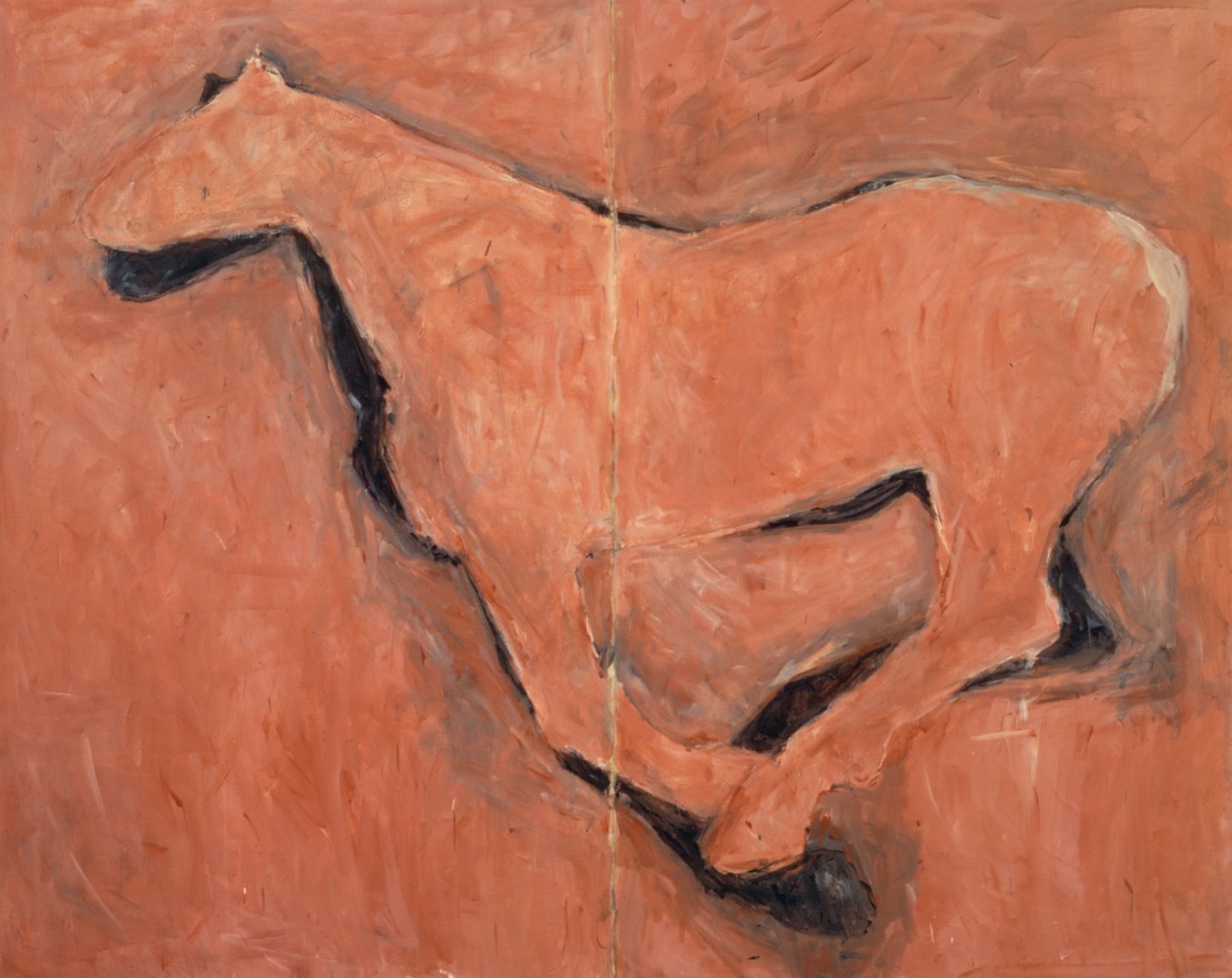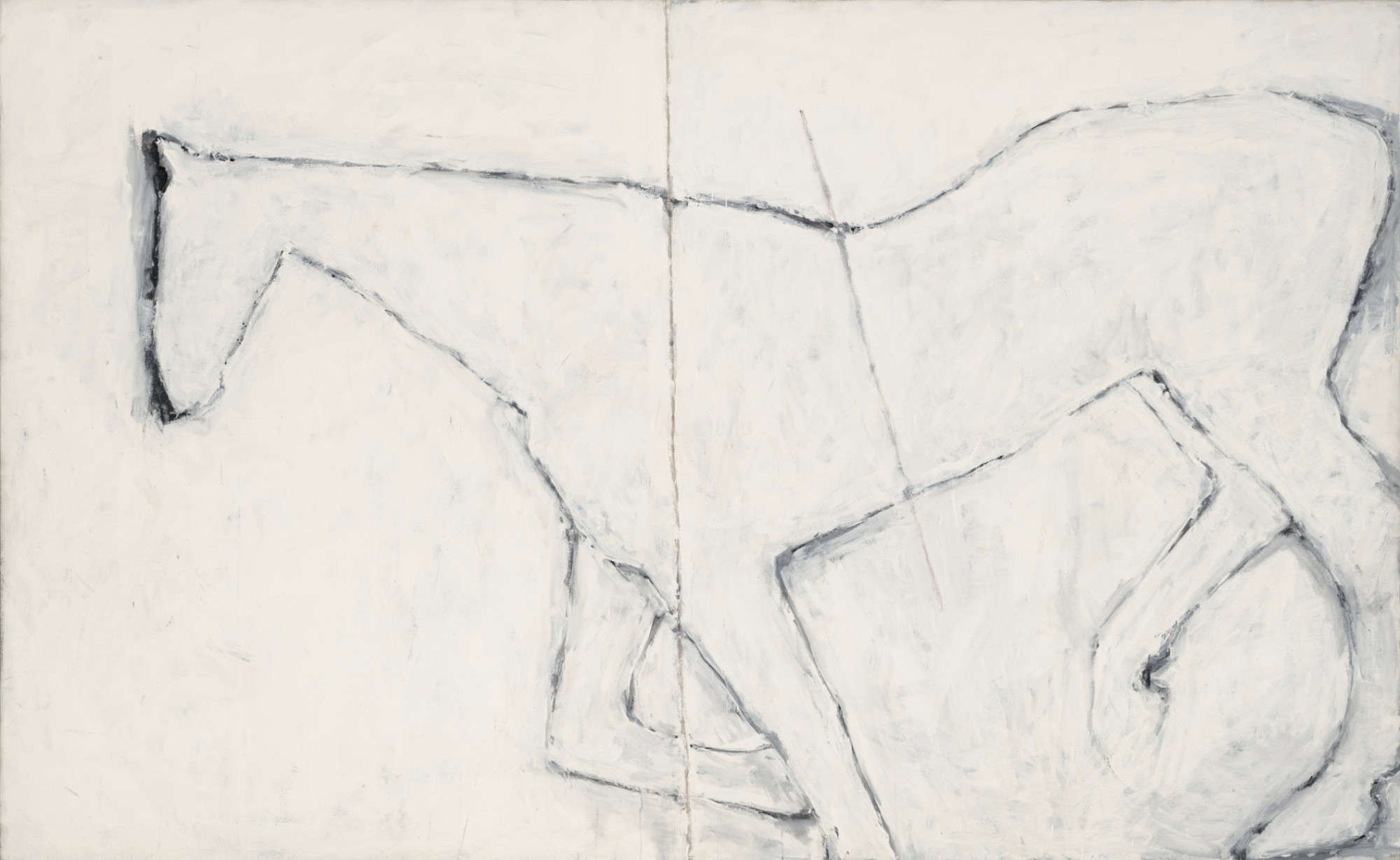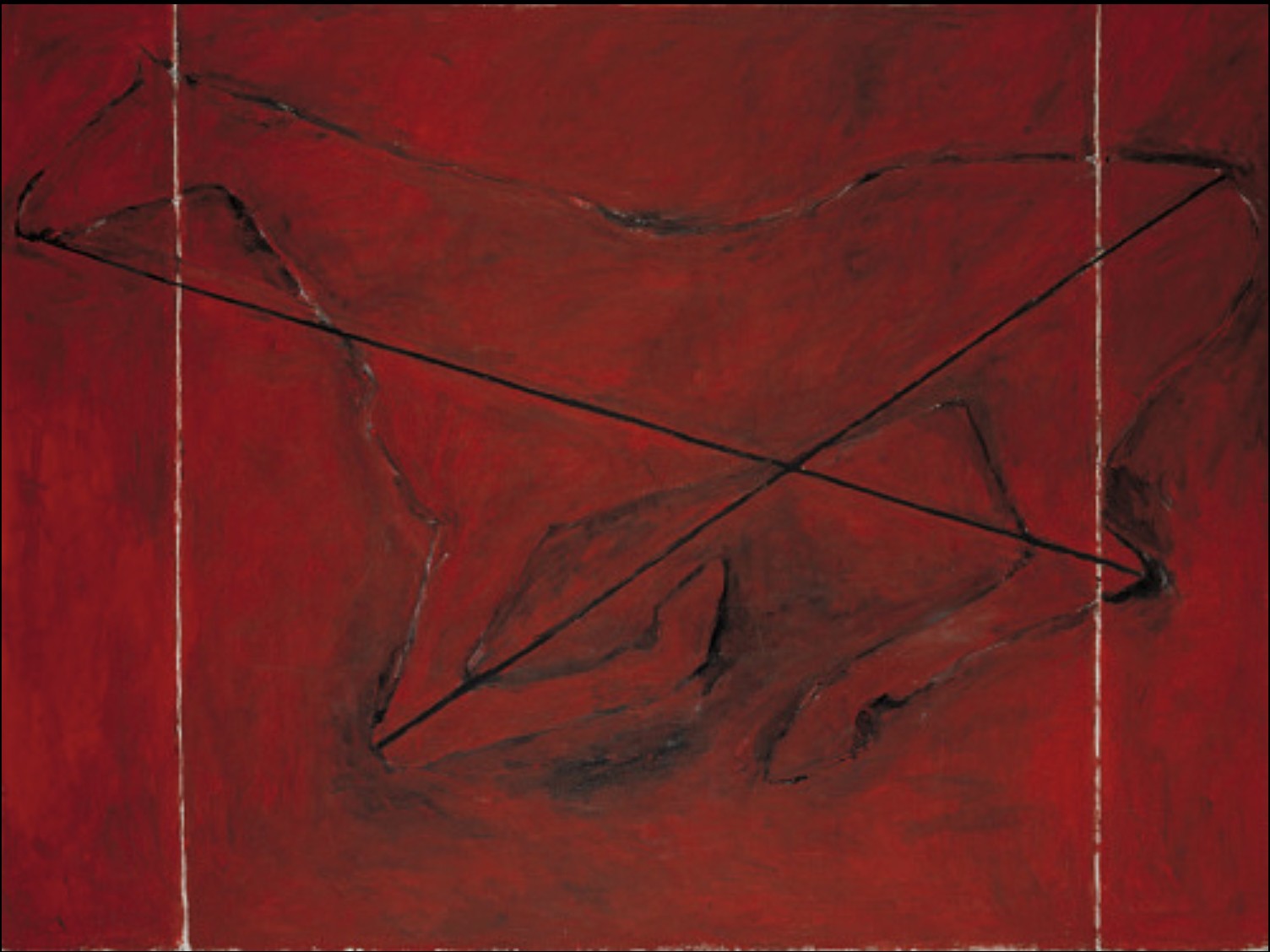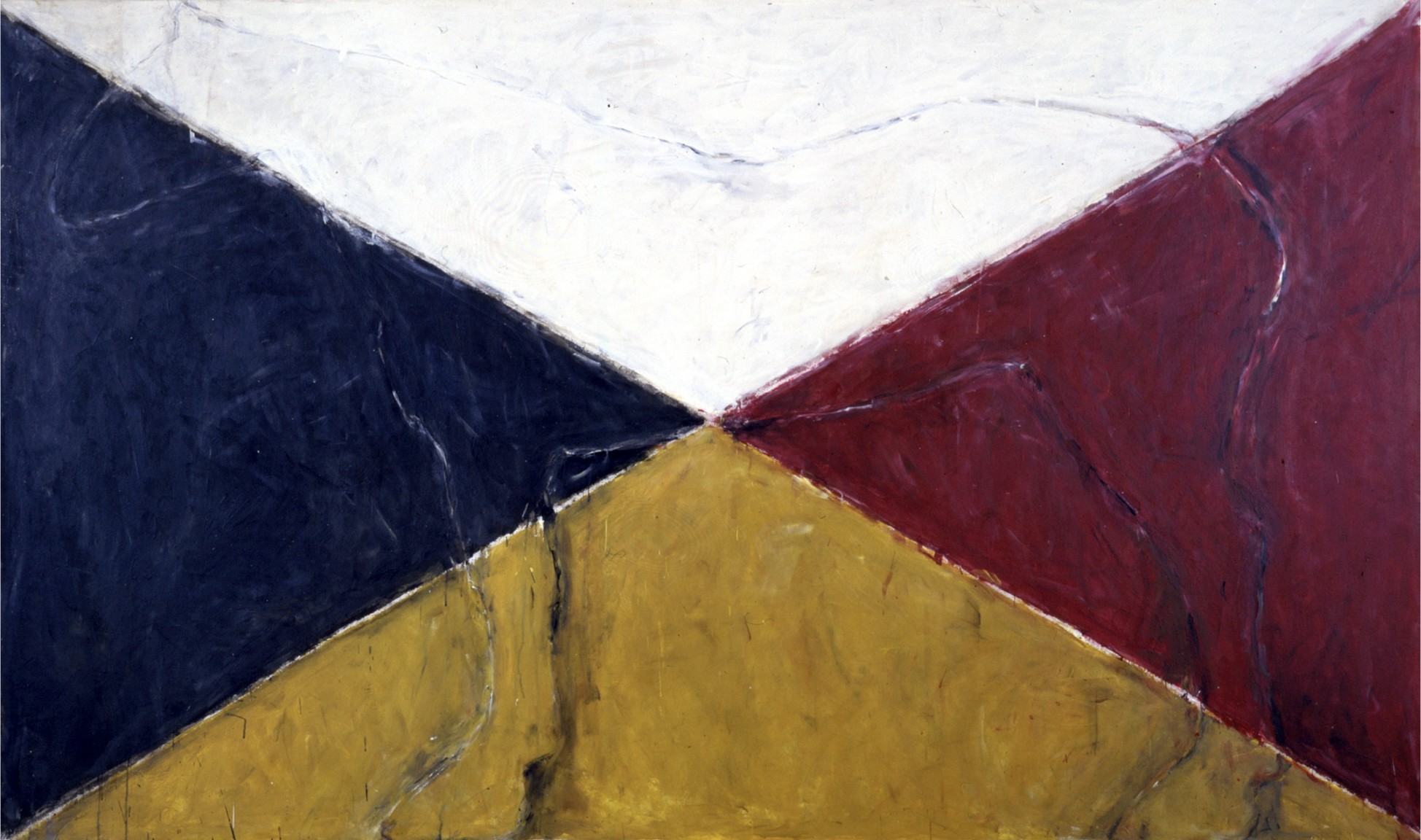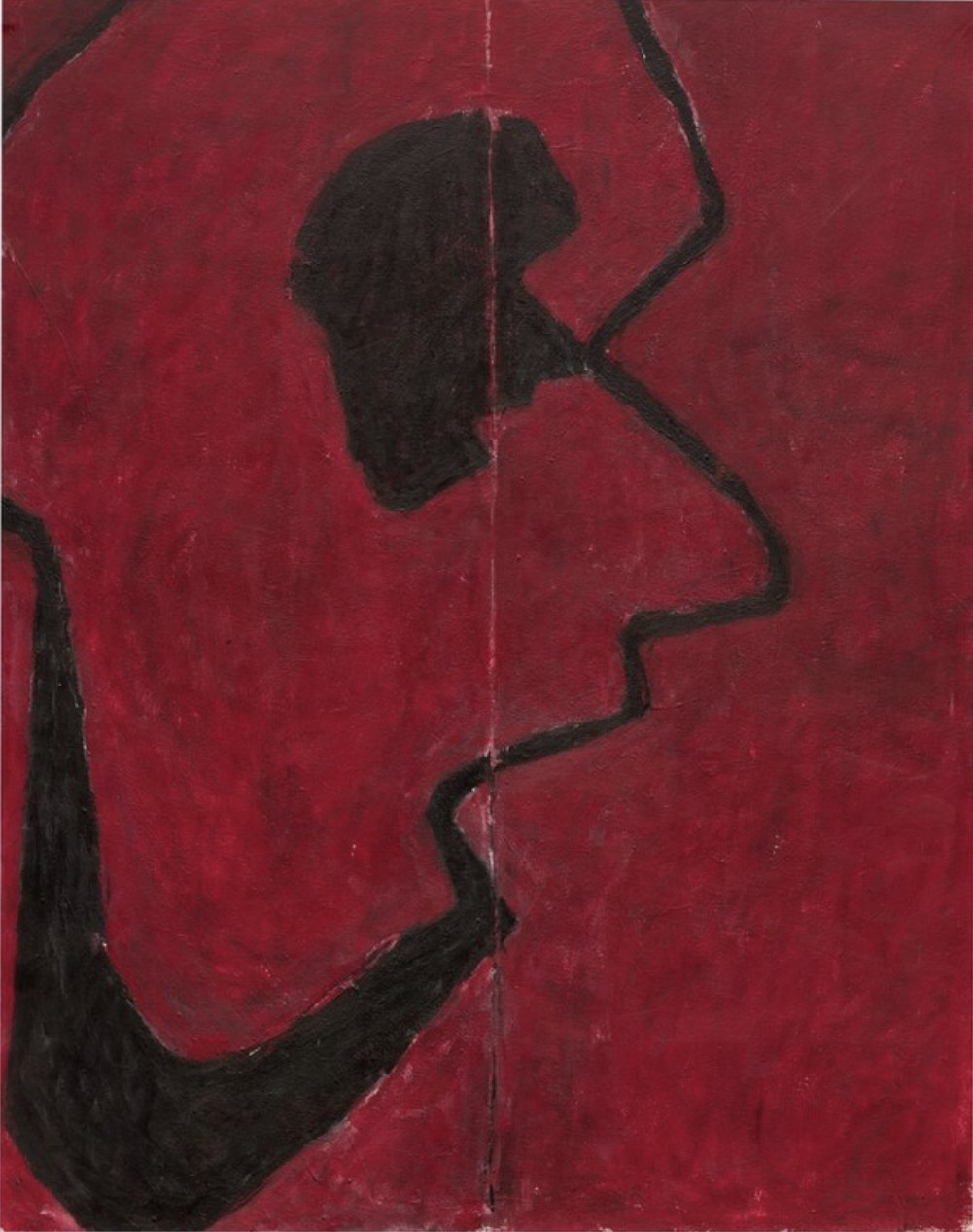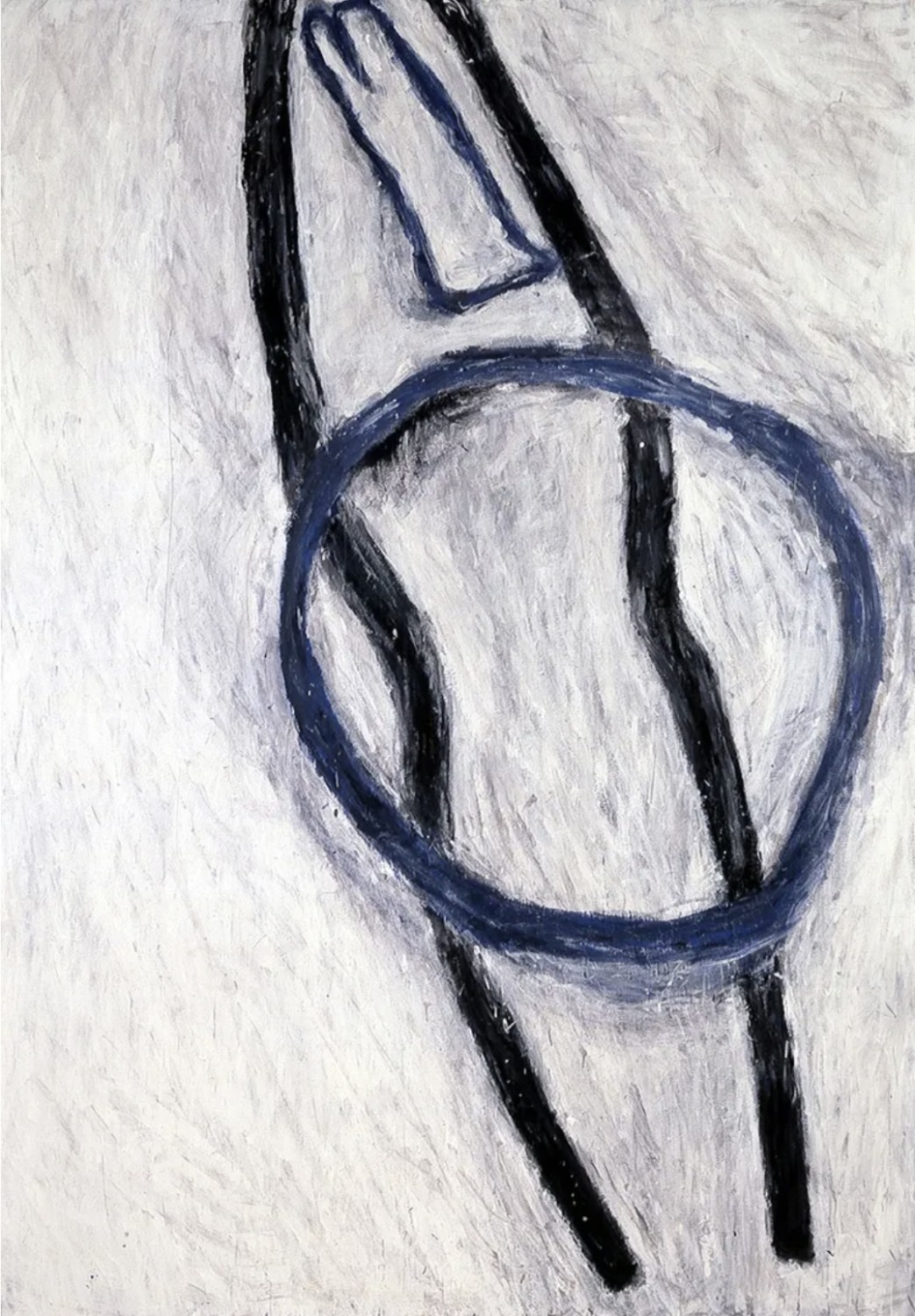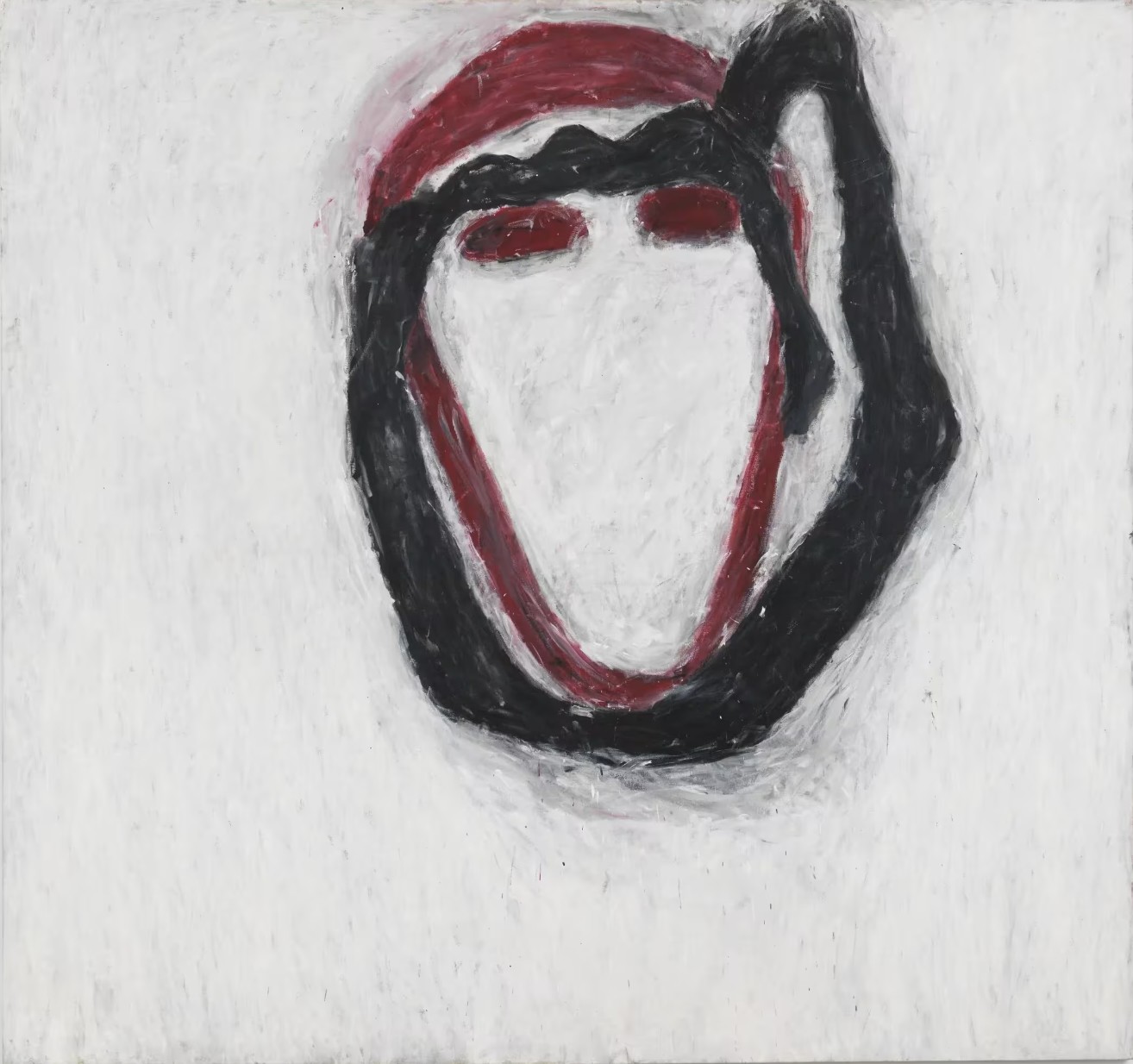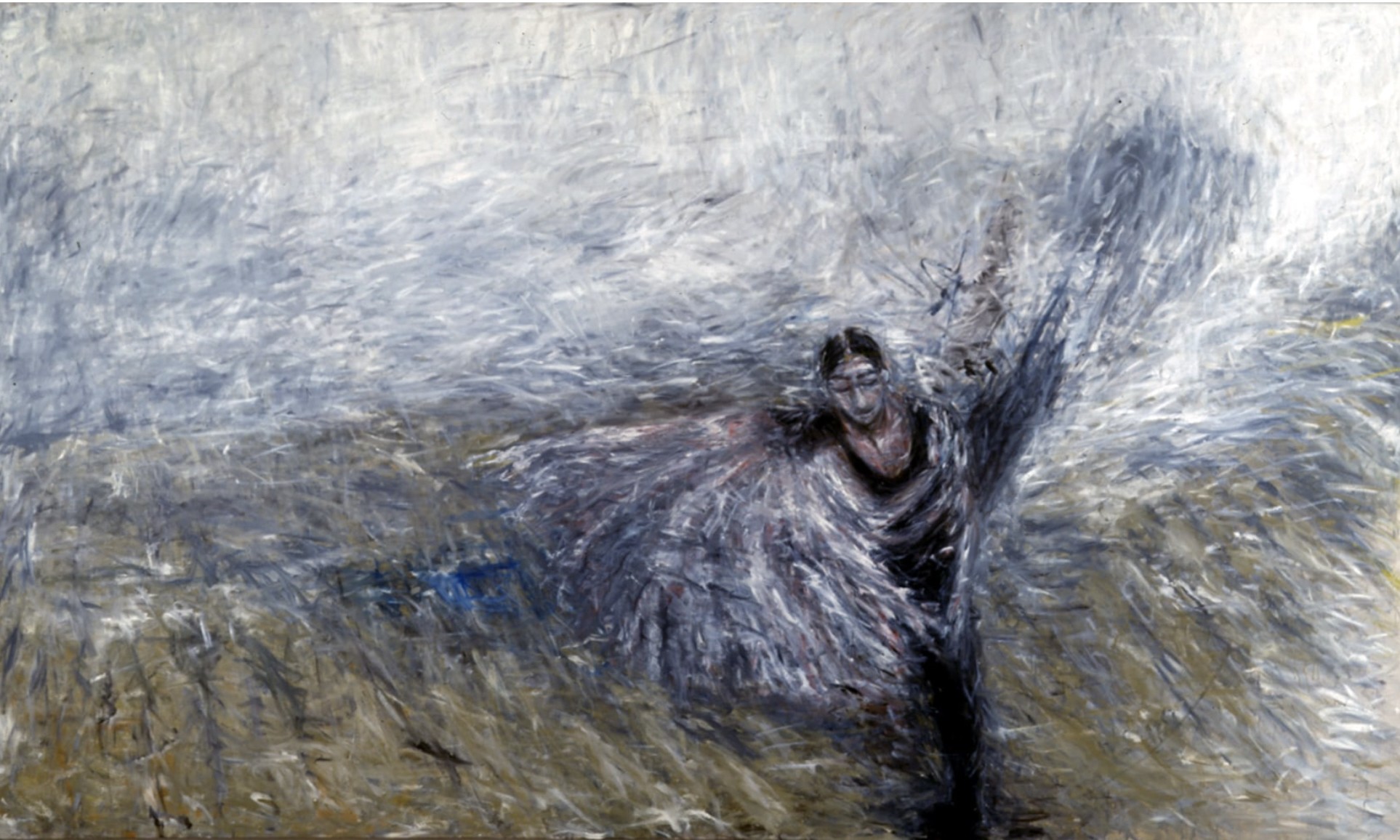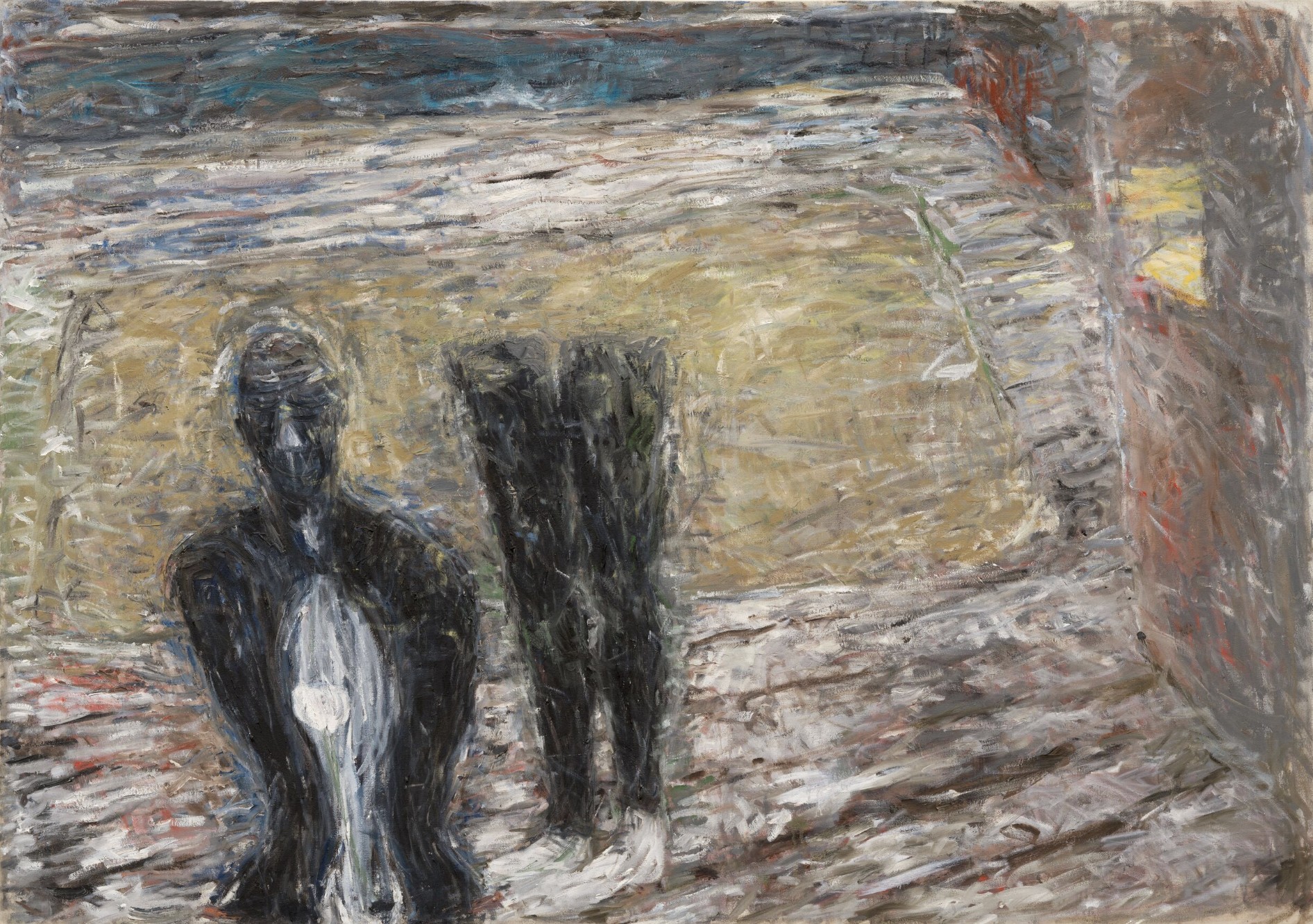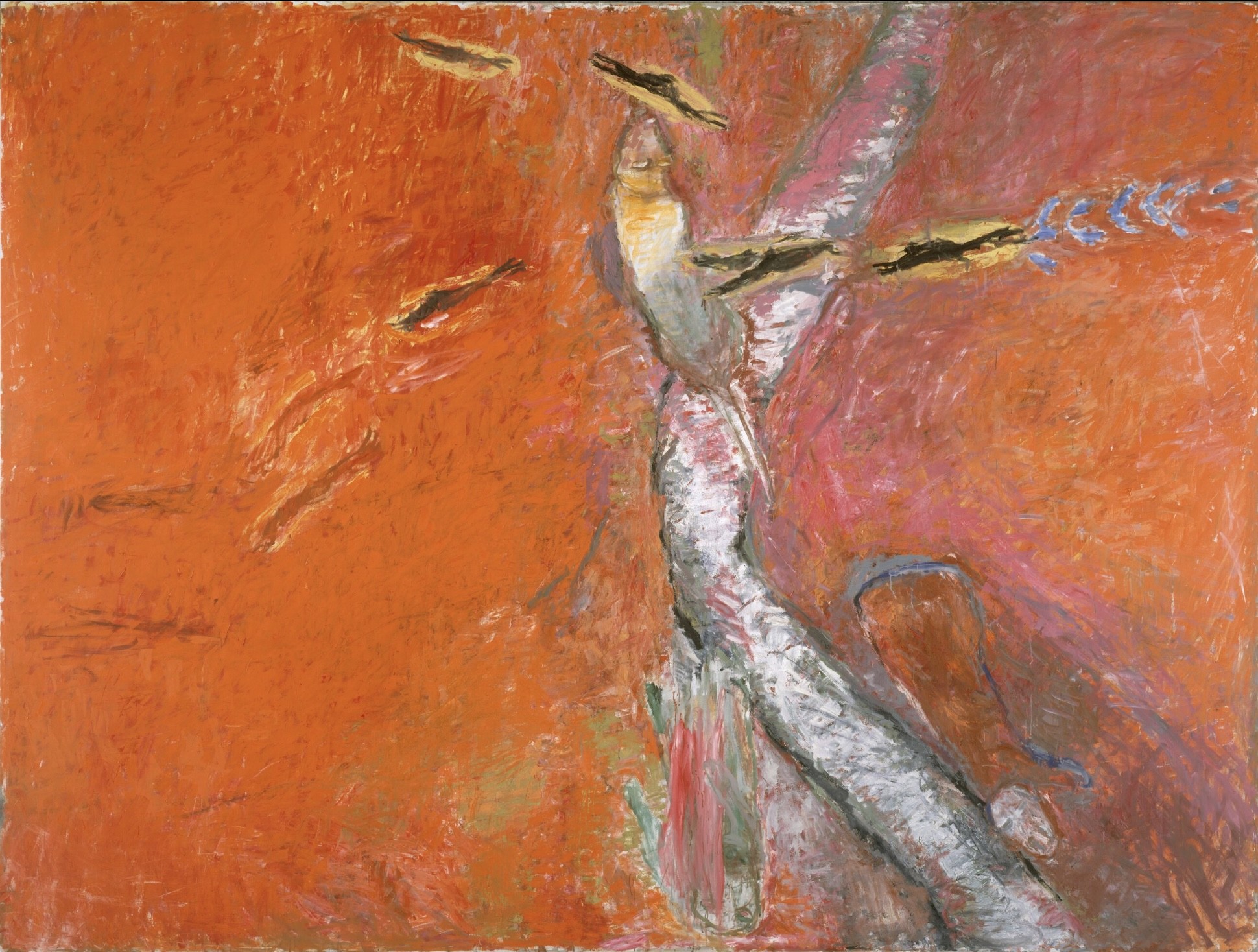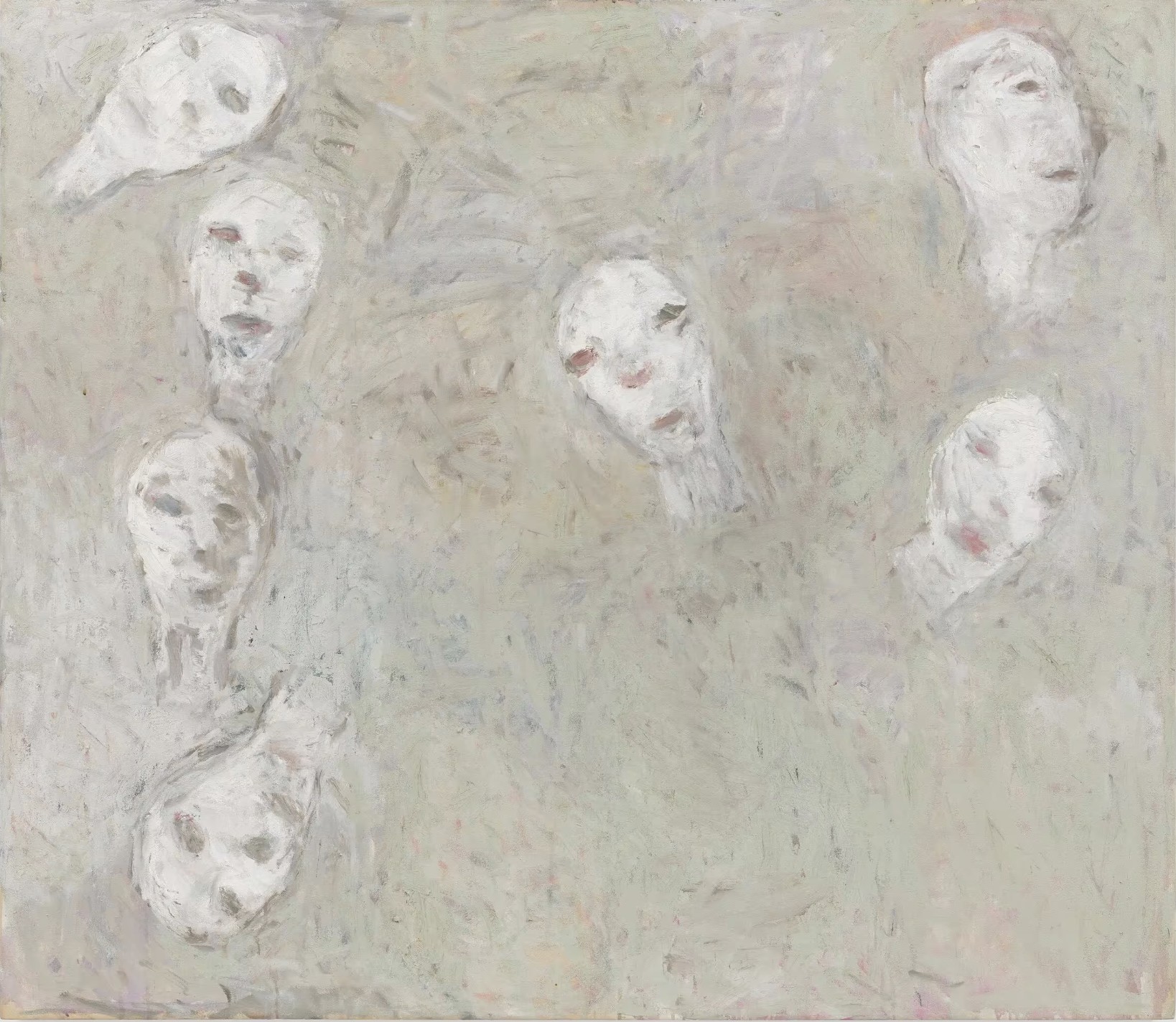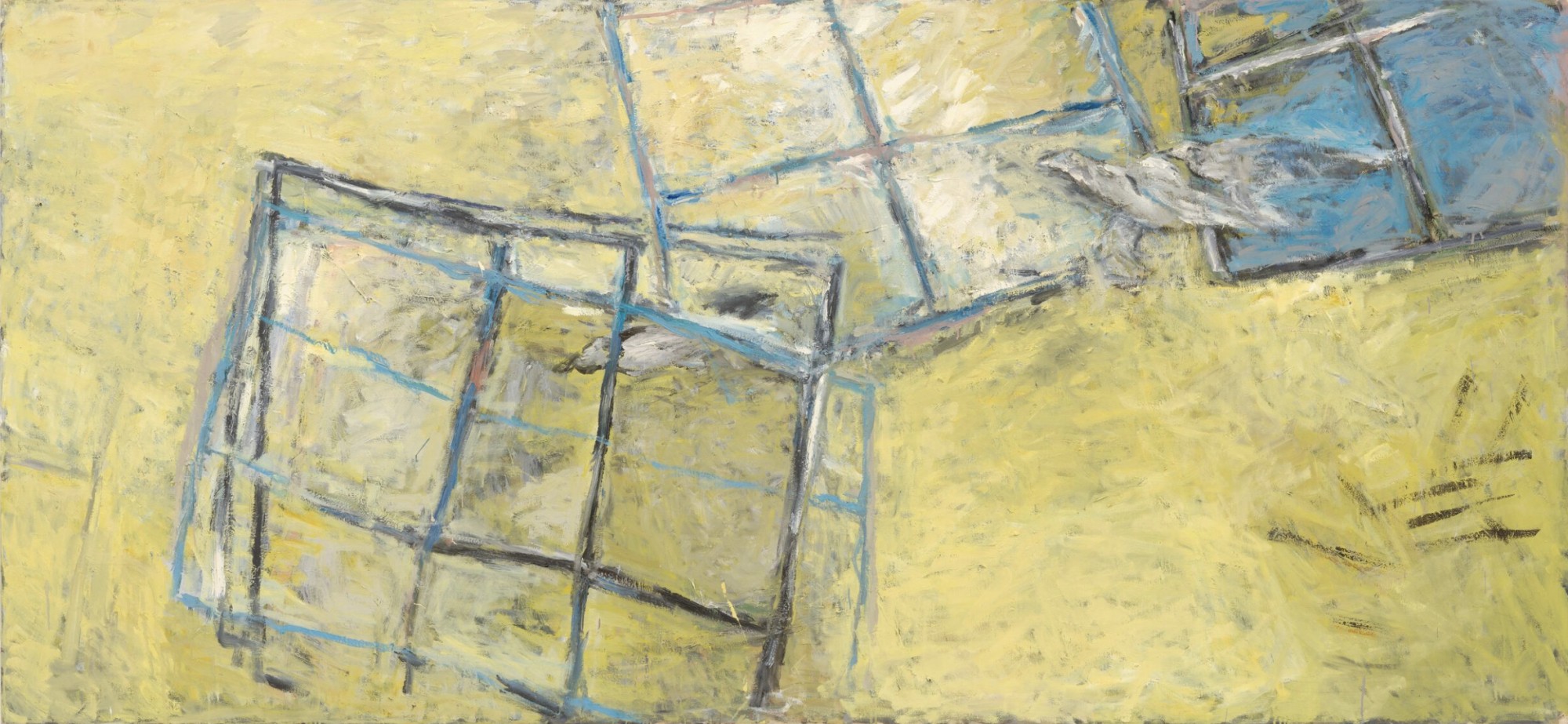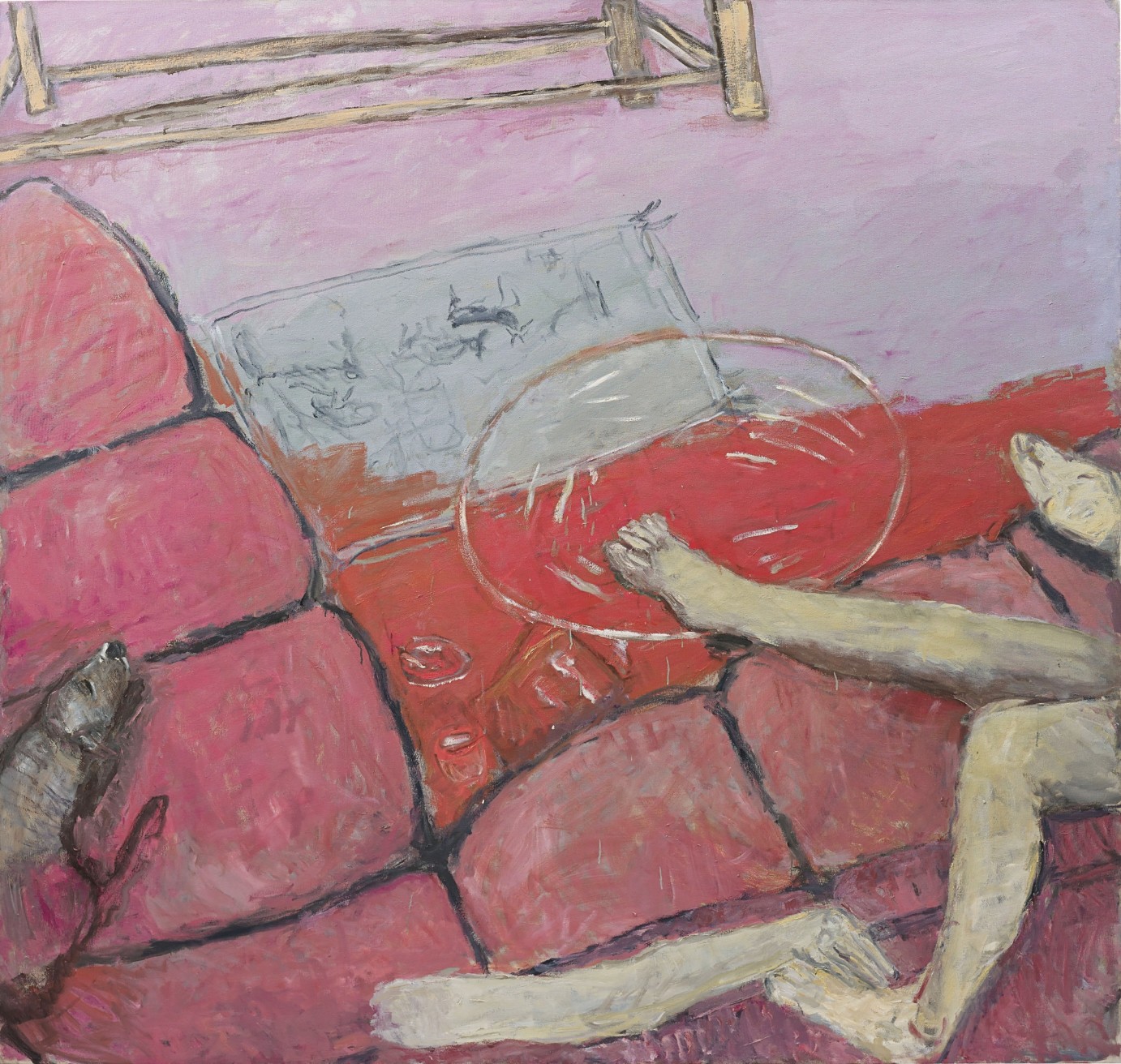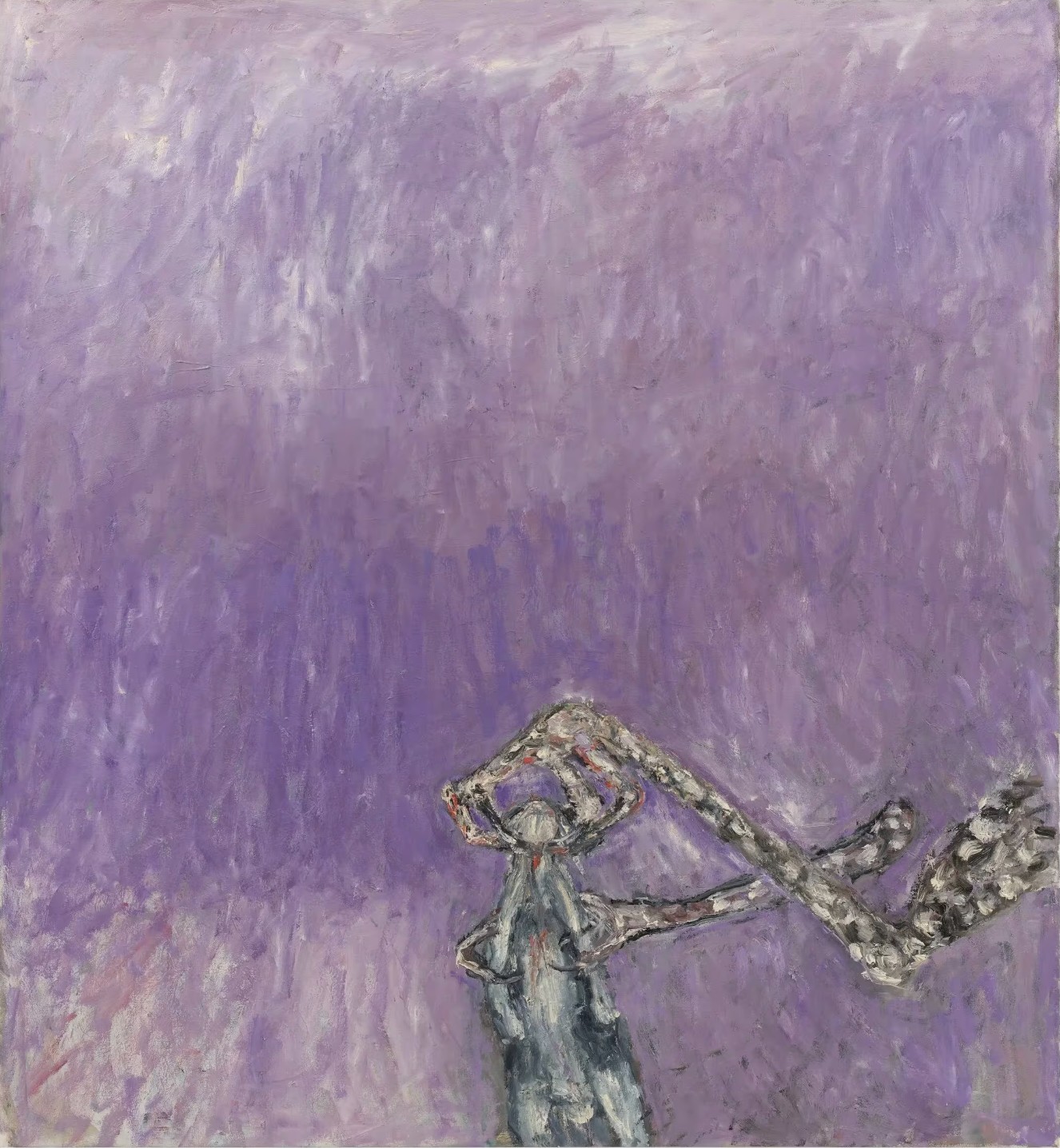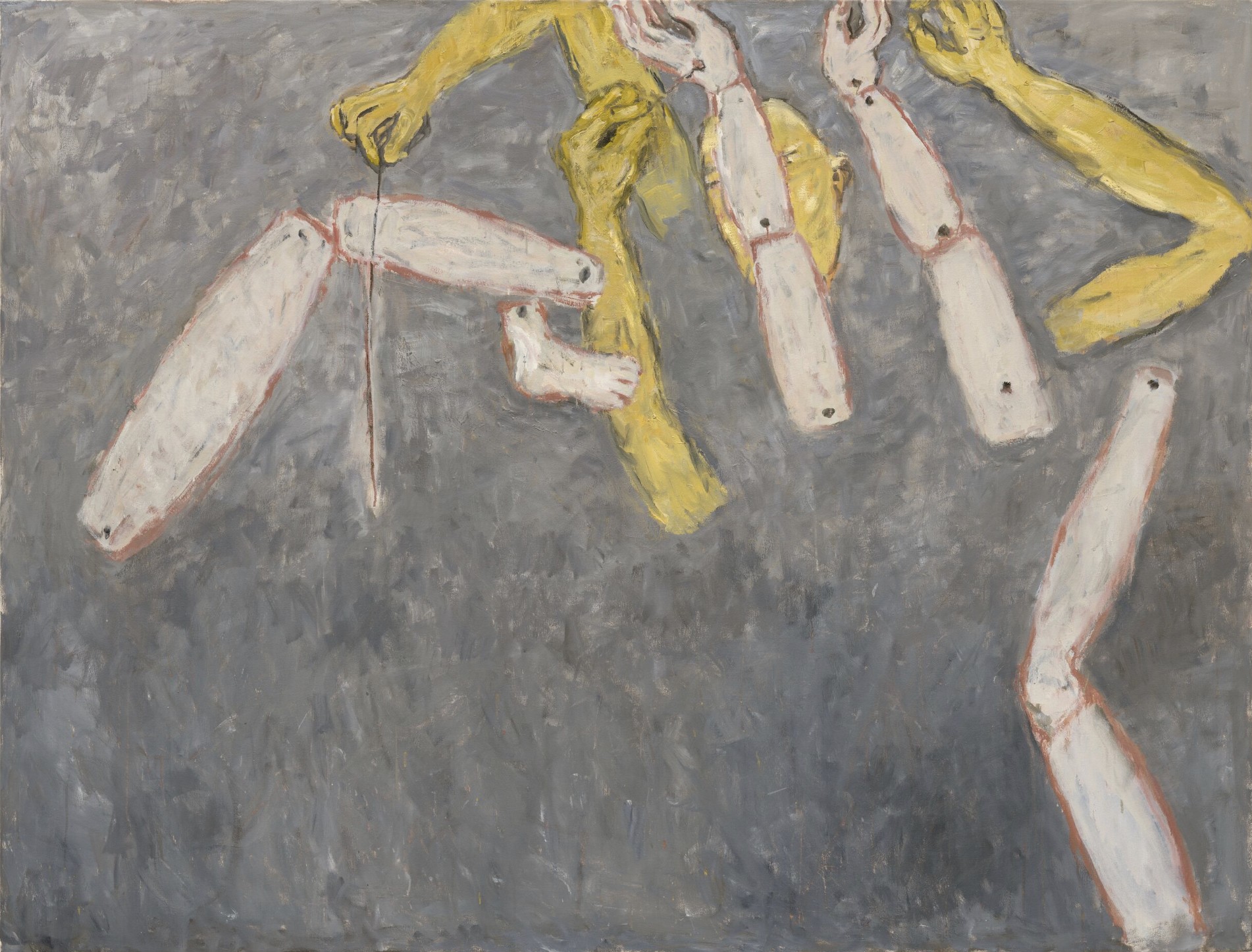Susan Rothenberg: Something Beyond
By Laura Heyrman
“I think there has to be an interesting process of transformation between the perception of reality and the creation of paintings. … And that's what makes a good painting: the process of transformation and the willingness to leave reality behind.” – Susan Rothenberg
Artist Susan Rothenberg (American, 1945-2020) was a major force in painting from the 1970s onward. The works in her first solo exhibition were described by a critic as single-handedly reviving figurative painting. Though she certainly wasn’t alone in the resurgence of figuration, Rothenberg found a way to blend the simplicity of line and shape from Minimalism with the intensity and physicality of Abstract Expressionism, the styles which had dominated the preceding decades in American painting.
Rothenberg’s early paintings were dominated by the outlines of horses, and those remain her best-known works. The artist settled on the horse as a recognizable and comprehensible shape which she could use to explore her ideas about a new approach to painting.
“When I stumbled on the horse I went, okay, this can be my Jasper Johns flag. This can be nothing to me because I don’t like horses. I can draw a line through it and make it flat, I can take all the things that I’ve learned in the last couple years and negate painting as much as possible in terms of illusionism, shadow, and composition.” – Susan Rothenberg
Examples in this slide show, like Axes, Cabin Fever, and I X I, demonstrate how she reduced the animal to a contour line that is both surrounded and filled by a dense and expressively painted field of color. Patches of black emphasize the horse’s outline but don’t create any interior detail, shading, or setting. As the artist later recognized, viewers bring with them many ideas about horses’ power, movement, weight, and beauty that she never considered when she was making these paintings. To Rothenberg, horses were a device for executing her paintings, just like her canvases, brushes, and paints.
n the 1980s, Rothenberg expanded the subjects of her paintings, incorporating the human form, as both complete and as fragmentary body parts. The artist began to suggest movement, often through more complex background colors and textures. From the beginning of her painting career, the backgrounds competed with the objects for dominance. Balance between these two components is a hallmark of the painter’s best works. Rothenberg often referred to the dense, expressionistic backgrounds in her paintings as “the weather,” a term which inspired the title of the current exhibition of Rothenberg’s works at Hauser & Wirth in New York. (see below) The density of paint and hints of hidden colors convey an atmospheric quality even in paintings with white backgrounds, like works Blue Body and Red Head in this slide show.
“I think I care about beauty, but I don’t go for it. I hope it sometimes might be in there. I think maybe more in terms of a beautiful moment than trying to figure out what beauty is or what people respond to.” – Susan Rothenberg
From her earliest horse paintings, Rothenberg surrounded objects and fragments with densely worked, often intensely colored “weather.” The sumptuous color in some works is balanced by suggestions of horror and violence. Of the works in this slide show, this is most noticeable in 2006’s Lift Off, where the atmospheric lavender surrounds a pair of disembodied talons which clutch at a rodent-like creature. Small touches of red on the talons and the animal’s chest speak of violence the artist witnessed in nature as she explored America’s Southwestern landscape.
In 1990, Rothenberg and her husband, fellow artist Bruce Nauman (American, b. 1941), moved to rural Galisteo, New Mexico. In these new surroundings, Rothenberg introduced new subjects, including interiors like Pink Couch and Night Hotel (Azores) in the slide show below, and themes inspired by her life experiences, both past and present. An example included below is Las Blancas, a hallucinatory image of floating white heads which was inspired by the artist’s near-death experience after a bee sting.
Rothenberg had a successful exhibition career from the 1975 solo exhibition mentioned above onward. By the early 1980s, she was able to take a stand against the era’s practice of galleries and museums creating group exhibitions which included only a token woman artist. From 1982 on, the artist refused to participate in any exhibition where she was the only woman. She said “I’m not going to tell them who they should put in. But from now on I won’t be the only woman.”
Rothenberg’s works are in many of the most important museum collections in the world; several are represented by works in this slide show. Others include Buffalo AKG Art Museum, Buffalo, NY; The Baltimore Museum of Art, Baltimore, MD; Museum of Fine Arts, Boston, MA; Los Angeles County Museum of Art, CA; Louisiana Museum of Modern Art, Humlebaek, Denmark; Stedelijk Museum, Amsterdam; and Tate, London. The artist’s estate is represented by Hauser & Wirth, with locations in the United States, United Kingdom, France, Monaco, Spain, Switzerland, and Hong Kong.
“The paintings are like prayers, relating to wishing for something beyond ordinary life.” – Susan Rothenberg
Susan Rothenberg demonstrated a lifelong commitment to developing an artistic language that was aesthetically innovative and expressed strong emotion. Her large canvases contain dense atmospheres that nearly consume the objects they surround. The artist’s rejection of illusionism and her emphasis on contour line flatten form to emphasize the dramatically painted surface. As her career progressed, Rothenberg’s subjects became less obvious, so that the viewer has work to decipher not just the painterly effects but the objects and actions being depicted. The slide show below is designed to give you an overview of her long career and hopefully inspire you to seek out her powerful art in the future.
Current exhibition:
Susan Rothenberg: The Weather, through October 18, 2025, at Hauser & Wirth, 542 West 22nd Street, New York, New York 10011 hauserwirth.com/hauser-wirth-exhibitions/susan-rothenberg
Please share your comments and questions on Substack. LINK irequireart.substack.com/p/viewing-room-42/comments
Longer captions may not be fully visible on smaller screens. We apologize for the inconvenience.
If the caption obscures part of the artwork, click on the image to turn off the caption.
